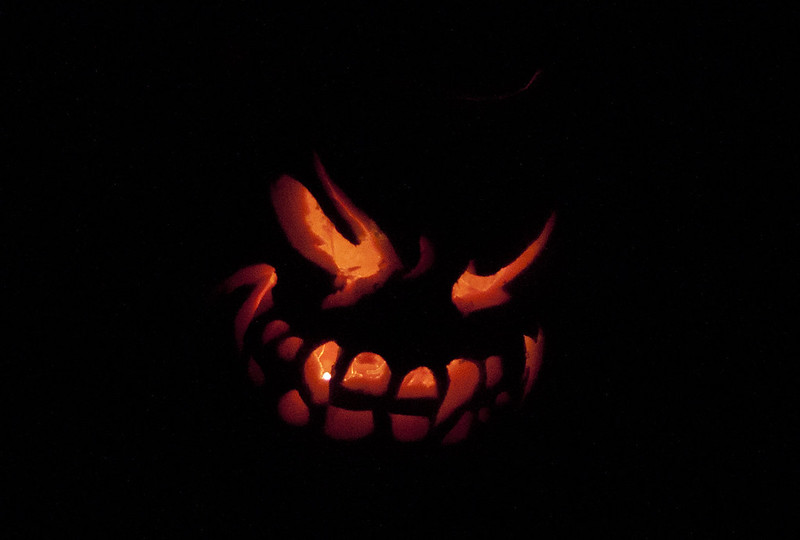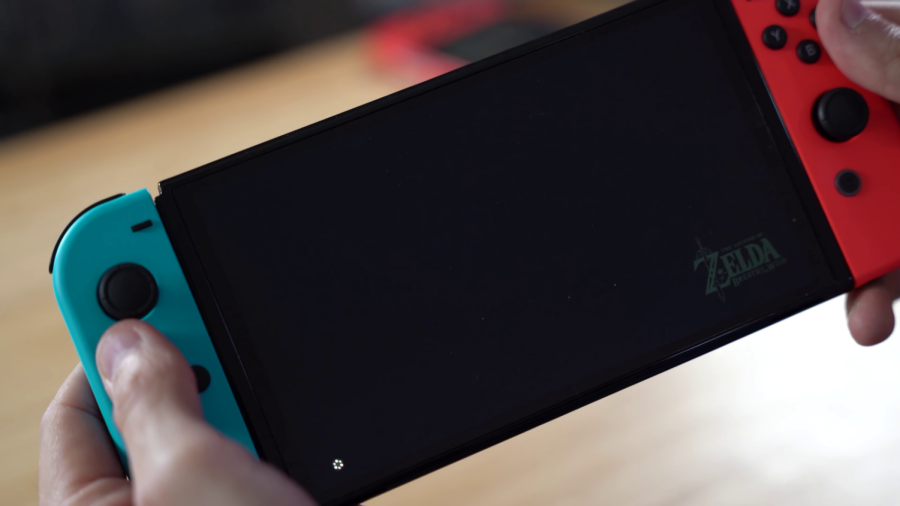The Legend of Zelda: Skyward Sword is an absolute triumph and can be considered among the best games on the Wii, as well as one of the best in the series. However, certain flaws, though forgivable, prevent the game from reaching perfection.

Chronologically, the game serves as the first in the series, despite it being the most recent title. Link, who is a citizen of Skyloft, learns of his fate as the Goddess’ chosen hero. He must venture to save Zelda, who is a childhood friend, rather than a princess. Skyloft is a city in the clouds, one the Goddess created from a chunk of the ground below when darkness threatened to engulf the land.
Link is a knight-in-training at the Knight Academy, which trains citizens to protect the city with their loftwings, which are giant birds bestowed to citizens during childhood. Link’s crimson loftwing, a rarity among the species, serves as his method of transportation. When Link wins the flying competition among his fellow trainees, Zelda and he engage in a tradition passed down among generations that honors the Goddess’. Before long, Zelda is swept away from a wild tornado to the world below the clouds and Link sets off on a quest to find her.
Link’s primary weapon is the Skyward Sword, a mythical weapon only the chosen hero may wield. The Wii Motion Plus controls are utilized to the fullest, since sword fighting actually takes precision. Link swings his sword in the same relative motion as the one the player makes. In addition to this, enemies actively predict and block attacks and most enemies have certain weak points that the player must identify. The first boss of the game acts as a reality check with the controls and will seriously punish players who don’t aim with their swings. Simply walking into a fray and swinging wildly will often result in a beating, though not always. Overall, the game is more difficult than previous installments, though doesn’t really reach the level of pure frustration.
The majority of his weapons also utilize motion controls in some way and add a deeper level of depth to the overall fighting and puzzle solving. Although the amount of items in the game has been reduced from the predecessor, Twilight Princess, they are used more actively. Due to this, each item becomes a requirement, rather than a one-shot tool to beat the boss or solve a puzzle. Get used to centering the Wiimote a plethora of times though, since calibration will often be lost within the action.
Items now have the ability to be enhanced and upgraded with rupees and loot obtained from monsters. Upgrades range from increased power to increased capacity. Although not all of them are useful, it’s still a step forward in the right direction. Players aren’t required to upgrade and it doesn’t hinder by much at all, but for the option to be there is a welcome addition. It’s there if people want it or they can pass on. Items are also overall more expensive, often leaving an empty wallet, but Link can catch bugs with his net or purchase wallet upgrades to help this.
Link has also been given a stamina bar which allows him to race through the environment and scale certain objects. It allows for more versatility and is used well in some aspects of solving dungeons. Other actions, such as skydiving, flying the loftwing and several other mini-games all use the motion controls well. The Skyward Sword has a dowsing-rod function option that allows Link to center in on objects and places through aiming with the Wiimote. Overall, the motion controls are implemented enough to be fun for what they are used for, but don’t overstay their welcome.
One of the standout qualities of the game is the level design and art. Skyward Sword features an impressionist art style, utilizing the hardware capacities of the Wii in a unique method. The worlds are alive with color, making each area a scenic wonder. The total area to explore has been condensed from past games, but an activity is presented with each passing. This improves the game so that it’s never a chore to get from one place to another when simply trying to travel. The same can’t be said about the aerial treks. The sky world consists of a few main islands and a plethora of scattered boulders which only hold treasure chests. Link activates a cube on the ground, which acts as a beacon. A marker then shows the position of the locked chest in the sky, making it a repetitive pattern over time. Pair this with the ability to dowse for these cubes eventually, diminishing the sense of discovery, especially when guided to these treasures most of the way.
It would have been nice for the sky world to be more alive with things to do. However since there aren’t any, it leaves a longing for a quick travel option, as getting from one side of the map to another takes some time, which gets old quickly.
The game follows a pattern of getting to a new area, solving a fetch quest or puzzle for several hours, then finally reaching the dungeon. There are moments where this process creates tedium, but for the most part it works well. Dungeons themselves are expertly crafted. Puzzles are difficult, but fair, and give off a great feeling of accomplishment. However, Link’s partner, Fi, can often ruin this experience. Fi is the artificial intelligence in his sword that was programmed by the Goddess. The main problem of Fi is that she doesn’t shut up. When a cut scene shows what to do, or shows an object of interest, Fi will appear and inform the player to investigate it most of the time. This unnecessarily points out the complete obvious. There are also moments where she ruins entire puzzles, holding your hand for majority of the game, seriously killing some of the sense of accomplishment previously mentioned. It should be noted that the chime she wants the player to call on her will sound every time when Link is low on life or battery, and often during boss battles. Pair this up with bland, monotonous dialogue and Fi becomes serious step backwards from Midna of Twilight Princess.
Link must undergo Spirit Trials in each of the worlds to obtain a new item necessary for progression. Here, Link is unarmed and must maneuver the world, while also collecting 15 beads without getting hit once by the guardians who roam the area. Beads stun the guards for 90 seconds, but patrolling ghosts can alert the guards, who may continue their pursuit. It’s completely frantic and installs an anxiety in the player rarely seen in a Zelda game.
Skyward Sword attempts to give personalities to the characters through a deeper story and many side quests. Link isn’t alone in his quest and encounters a wide variety of people who add depth to the story, in which much lore of the series is fleshed out. Although, most of the people want nothing more than for Link to go find another item for them. Characters are varied enough to give the world a personality and push through some of these annoyances.
One of the game’s serious downfalls is the boss battles. The first few really introduce new concepts well and some later bosses reach large scale, offering plenty of excitement for felling the large beast. Masterful orchestration and beautiful scores illuminate these fights, making most of them an epic endeavor. However, two of the bosses in the game are fought three times each, just with a new move. One of them is fought again as a mini-boss later on. Completing the sixth dungeon only to be greeted by something already fought is a letdown and makes the whole trek through the dungeon seem meaningless. The final third of the game’s bosses don’t test the player on skills picked up with items either. All of them are fought with the sword and basic swings. The final boss himself is completely disappointing and can be beaten by a pattern of shield bashing, then swinging and nothing else. It is a lackluster finale that left me thinking there was going to be a surprise final form when everything seemed great. Zelda has evolved over the times with bosses that inspire awe, but Skyward Sword executes these with a fizzle.
Fans will love the subtle references to past games and similarities to the games that take place later in the series. Some will have mixed opinions over the various changes. Link begins the game with six hearts instead of the usual three and must utilize an item check since he can’t carry all of his items with him. There is a lack of the element-based dungeons but it’s nowhere close to detrimental.
Players can expect at least a 40-hour quest, especially if they attempt to thoroughly explore the world for all items. However, some of this time would have been appreciated with a couple more dungeons or a deeper investment in another possible area to explore or better bosses. Much of this time is filled with fetch quests that have Link running from one side of an area to pick something up, then running back to drop it off. Fans are likely to argue over which game is better for the Wii, Twilight Princess or this. There is a rough divide, with different aspects leaning in favor of both games. Skyward Sword is easily the most immersive of the two, though not everyone is going to appreciate the change.
Regardless, Skyward Sword is an amazing addition to any gamer’s collection as well as anyone even vaguely interested in the series. Despite some changes that can be perceived as drawbacks, the experience is more than enough to drive one to overlook these shortcomings.
Final verdict: 9/10
Tim Jones can be reached at [email protected] and followed on Twitter @TimJones90











